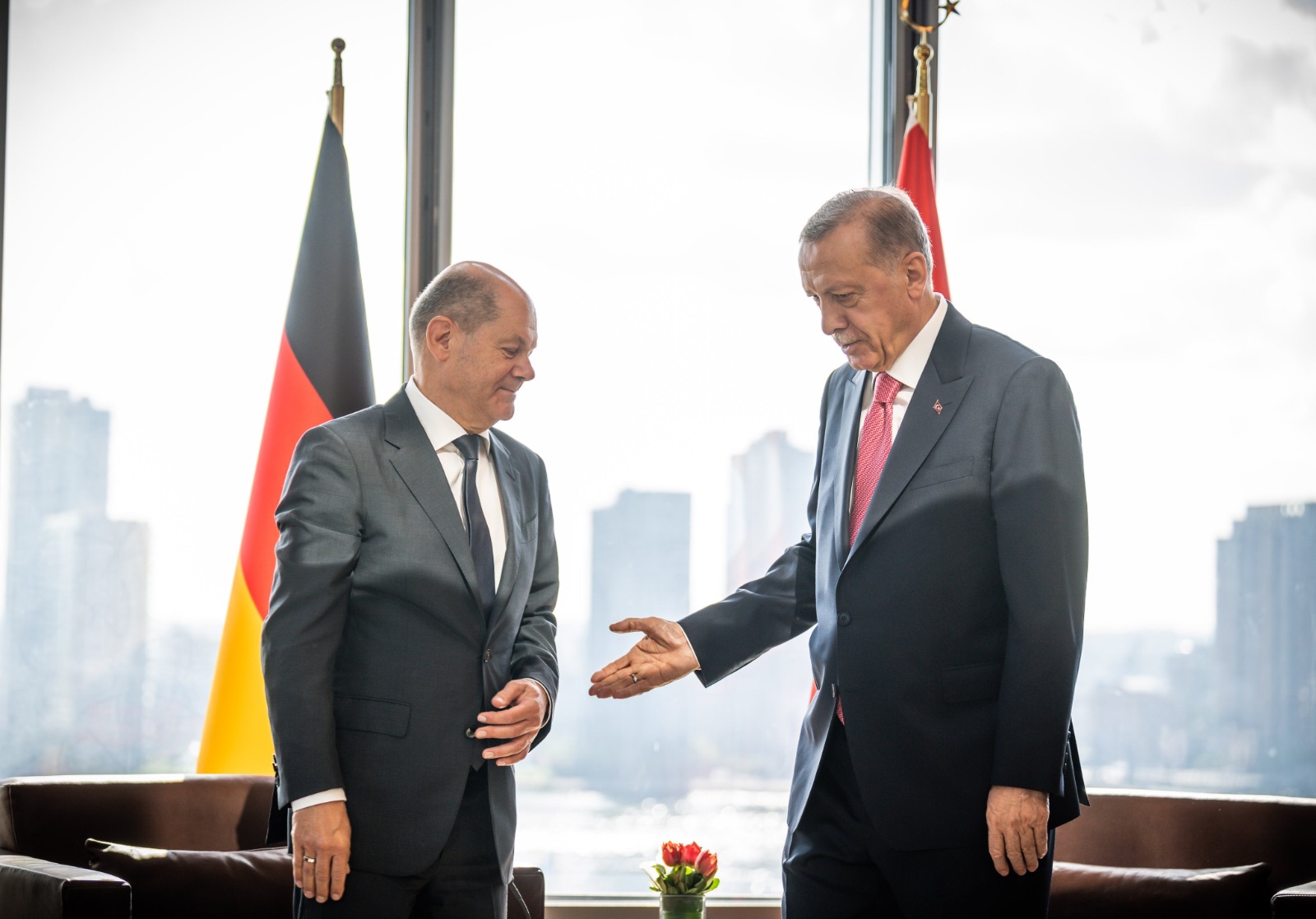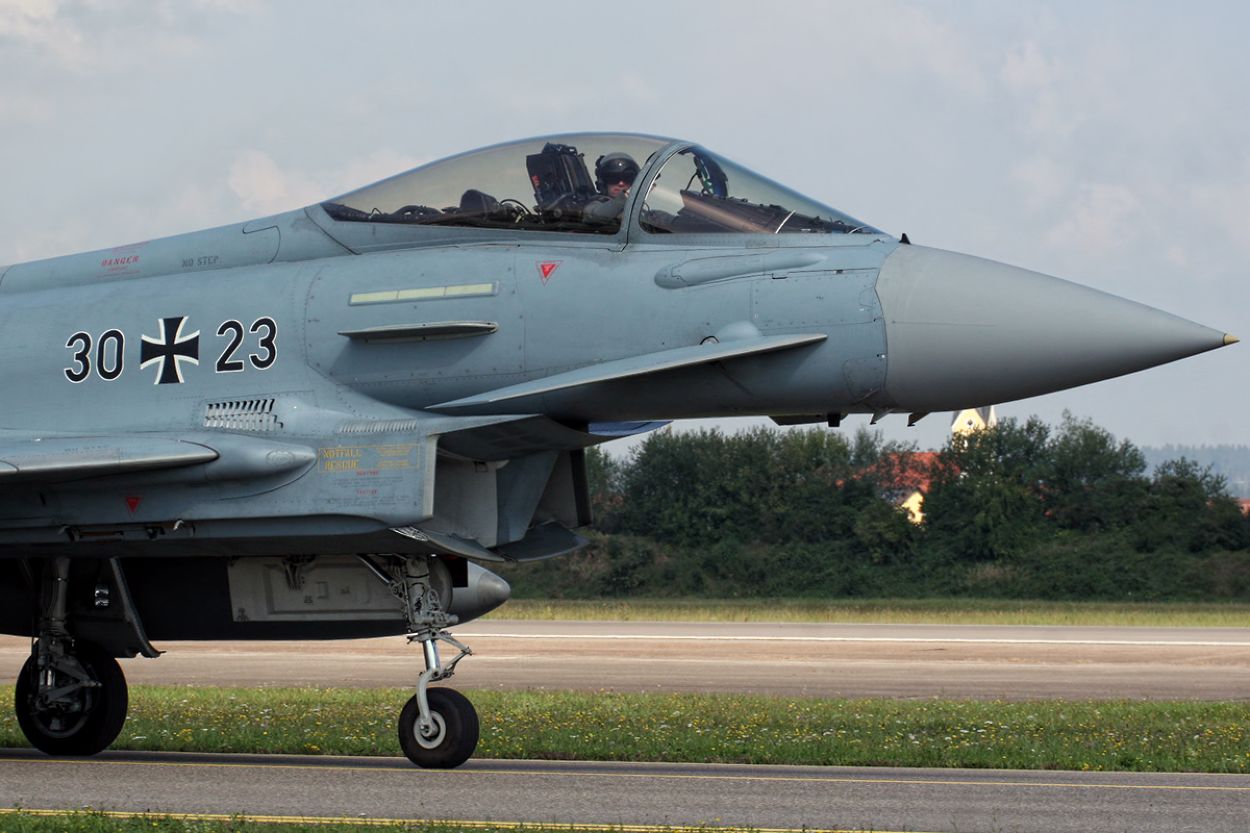Barred from acquiring the F-35 Lightning II stealth aircraft by the United States, Turkey is now working on technical studies to buy another combat fighter that once “killed” the mighty F-22 Raptor in wargames.
Turkey had earlier announced that it was holding discussions with the members of the Eurofighter consortium, which comprises the UK, Spain, Italy, and Germany. All members—except Germany—have expressed interest in selling the fighters to Ankara and are reportedly holding technical discussions to expedite the purchase process.
Germany’s reservations to authorize the sale of Eurofighter to Turkey is attributed to the latter’s questionable human rights record. Berlin suspended arms sales to Turkey in 2019 following a Turkish attack on the Kurdish YPG group in Syria.
The Turkish administration has urged Germany to lift the restriction so that the country can upgrade its aging air force, but Berlin has not bowed to its demands.
However, with German Chancellor Olaf Scholz set to visit Istanbul on October 19, there is optimism that further discussions may lead to a positive outcome.
When reporters asked Scholz whether the sale would be on the agenda, he said, “Of course, we always discuss the supply of weapons to our NATO partner,” adding that Britain is also currently holding talks on a potential sale with the Turkish government.
Some recent reports indicated that although Germany had given the green light to start technical talks over a potential purchase, it had imposed certain conditions.
However, Turkish defense officials refuted the claims. “We are focused on incorporating modern fighter jets with advanced technology into the Turkish Air Force’s inventory while also diversifying our fleet,” some unknown defense sources told reporters.
Since last year, Ankara has been attempting to acquire about 40 Eurofighters at an estimated cost of $5.6 billion.
Earlier this month, media reports indicated that Germany approved a $368 million weapons sale for Turkey. The sale reportedly included anti-aircraft missiles and submarine torpedoes. That had spurred optimism that approval for the Eurofighter Typhoon may finally be on the horizon.
Turkey’s interest in purchasing the Eurofighter Typhoon came after a long, drawn-out process for the acquisition of F-16s from the US, which was approved earlier this year after Ankara ratified Sweden’s NATO membership. However, just months later, the country formally pursued the Eurofighter Typhoon instead. You can read more about this in a detailed EurAsian Times report.

The Turkish Air Force is currently dominated by aging F-16 fighter jets. Though the country was earlier slated to receive the cutting-edge F-35 Lightning II stealth fighter jets, the US expelled it from the F-35 program for purchasing the Russian S-400 air defense system.
Meanwhile, its adversary Greece has acquired the 4.5th generation Rafale and signed an agreement for the F-35 stealth fighter jet.
Turkey requires Eurofighters to replace the void left after being removed from the F-35 program. As the country continues to develop its fifth-generation aircraft, KAAN, experts believe that acquiring Eurofighters and upgrading its F-16 fleet would strengthen its air force, especially in the face of the challenge posed by the Hellenic Air Force.
Moreover, though a fifth-generation stealth aircraft would have been an ideal addition to the Turkish Air Force as originally planned, the Eurofighter Typhoon is also a force to reckon with and holds the distinction of “shooting down” the American F-22 Raptor in wargames.
When Eurofighter Typhoon “Shot Down” A Raptor
More than a decade ago, America’s formidable air superiority fighter, F-22 Raptor, considered the world’s most capable jet because of its stealth features and sensor fusion technology, lost a couple of dogfights to 4.5th general German Eurofighter Typhoons.
The debacle happened at the US Air Force’s (USAF) large-scale Red Flag air combat exercises over Alaska in 2012.
Red Flag is a sophisticated aerial combat training exercise conducted by the USAF several times a year. It simulates near-peer conflict by pitting a wide range of aircraft, frequently from multiple nations, against realistic and large-scale threats.
In the 2012 iteration of the drill, Germany participated by sending eight Eurofighter Typhoons from Jagdgeschwader 74, the 74th Tactical Air Force Wing of the Luftwaffe, to Eielson AFB in Alaska.
The drill included a sequence of within-visual-range (WVR) dogfights between the Typhoons and the Raptors. And in a very unexpected outcome, the German Eurofighter Typhoons dealt notional defeats to the Raptor in close-quarter dogfights.

This wasn’t the first time that the Raptor had tasted defeat. In fact, before these drills, the Raptor had been defeated in dogfights by less advanced aircraft like the EA-18G Growler electronic-warfare fighter as well as the F-16 Fighting Falcon.
However, losing to German Eurofighters somehow became a huge deal due to the attention that the event received.
For the German Eurofighters, it was no ordinary feat. Following the exercises, the German Eurofighter pilots arrived at 2012’s Farnborough International Air Show, where they discussed their victories against the Raptors. Later, the German aircraft were even spotted wearing F-22 kill markings on their fuselages.
The Eurofighter pilots told reporters at the Farnborough Show that not only did their aircraft hold its own against the Raptor but also outperformed it in the WVR (Within Visual Range) sector when it was operating without external fuel tanks. The Typhoon IRST (Infra-Red Search and Track) system can locate even a stealthy aircraft at a distance of roughly 50 kilometers,” especially if it is large and hot, like the F-22,” a Eurofighter pilot stated.
Experts later surmised that although the F-22’s stealth and ability to operate beyond visual range allowed it to maintain its dominance, the dogfight had established that the Eurofighter was a very competitive dogfighter in close ranges.
A fighter jet involved in dogfighting must accelerate and turn more quickly to outmaneuver hostile aircraft. The Eurofighter is superior to the F-22 in both these areas. In addition, Typhoon’s design—particularly the materials used in its construction—gives it a comparatively superior degree of stealth even though it is a 4.5th-generation platform.
According to the aircraft’s manufacturers, “The aircraft is built with advanced composite materials to deliver a low radar profile and strong airframe. Only 15% of the aircraft’s surface is metal, delivering stealth operation and protection from the radar-based system.”
If Germany approves the sale of the Eurofighter Typhoons to Turkey, it would significantly bolster the Turkish Air Force until the fifth-generation KAAN is ready. For now, all eyes are on the German Chancellor as he makes his much-anticipated Turkey visit.
